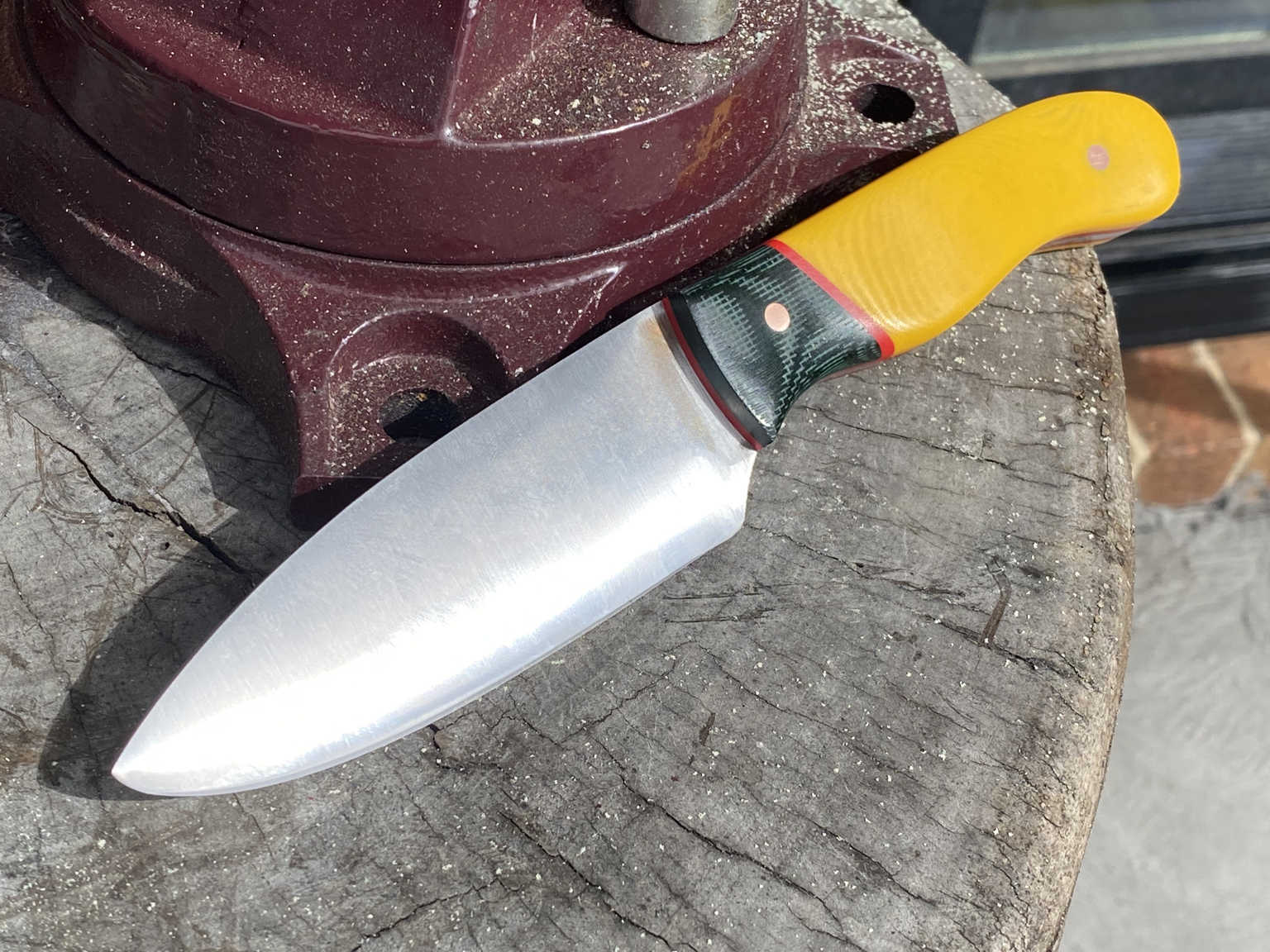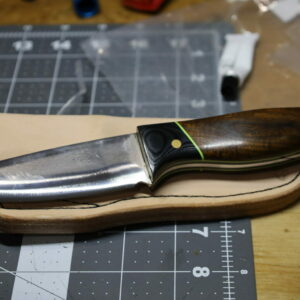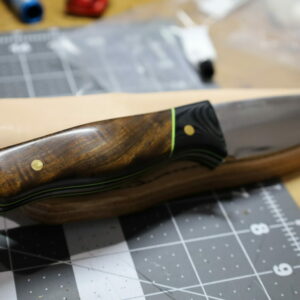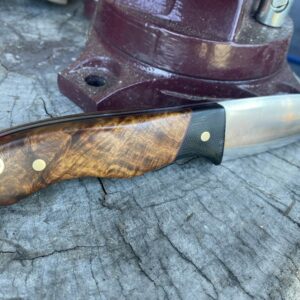Nessmuk Knife
$200.00 incl GST
Blade from Brisa in Finland, this is the “Nessmuk” style of blade named after George W. Sears, pen name “Nessmuk”. Sears was an early pioneer in writing about bushcraft, calling for going to the forest “not to rough it, but to smooth it”. The Brisa Nessmuk is a full-tang, carbon steel blade in 80CrV2, hardened to 59 HRC. The blade is 3.8 mm thick, 25-35 mm high and has 125 mm of blade length. Total length including handle is 235 mm. The handle has holes for 1/4″ corby bolts and 1/4″ lanyard tube.
Description
Blade
Blade from Brisa in Finland, this is the “Nessmuk” style of blade named after George W. Sears, pen name “Nessmuk”. Sears was an early pioneer in writing about bushcraft, calling for going to the forest “not to rough it, but to smooth it”. The Brisa Nessmuk is a full-tang, carbon steel blade in 80CrV2, hardened to 59 HRC. The blade is 3.8 mm thick, 25-35 mm high and has 125 mm of blade length. Total length including handle is 235 mm. The handle has holes for 1/4″ corby bolts and 1/4″ lanyard tube.
Take it from the expert
Daniel Winkler, an ABS master bladesmith and owner or Winkler Knives, (these knives start at about $350 US) uses 80CrV2 steel in many of his designs, “because of the performance level I require for our knives and axes.” According to Winkler, 80CrV2 steel is extremely hard and can be heat treated to have extremely strong properties, while still being serviceable in the field.
The sweet spot 80CrV2 steel occupies in terms of hardness and toughness makes for a blade with incredible lateral strength, shock resistance, and wear resistance. In Winkler’s workshop, shock resistance for 80CrV2 tested as well as S7 steel but with better edge retention. Winkler says “A knife that holds an edge for an extended period of time is worthless if it chips or can’t be re-sharpened.”
Winkler attests that he can heat treat his 80CrV2 knives to an HRC of 60 without resulting brittleness or chipping. Part of this is due to a salt-based heat-treating method which allows for extreme, consistent temperatures while eliminating oxygen, which eliminates carbon loss. Winkler also heat treats his blade stock after grinding to get the best results for performance and long field life. Chromium is one of the key ingredients of stainless steel, due to its reactivity to oxygen. Though 80CrV2 contains chromium, it is not considered to be in high enough quantities to be called a true “stainless” steel.
80CrV2 steel can rust unless you are properly maintaining it. The addition of coatings or finishes can help prevent oxidation. Winkler utilizes a Caswell finish to help prevent oxidation and produces a dark matte finish for his blades. All tool steels require some kind of care and maintenance. Cleaning, sharpening, and oiling your 80CrV2 knife (or any other knife for that matter) is par for the course for any steel.
Scales (Handle)
The front part is Raspberry Micarta and the rear is Black Canvas Micarta.
Sheath
Is made from 3 different Australian leathers. I’ve stitched it with synthetic thread so it won’t rot. You can attach it directly to your belt or use the dangler and attach through that to give you a lower carry. You should probably oil the sheath at some stage with leather dressing to help waterproof and protect it. Ideally you shouldn’t store the knife in the sheath for extended periods as it can rust in there.
Fire Steel
Doesn’t require any maintenance. Spine of your blade should be able to strike it effectively.




